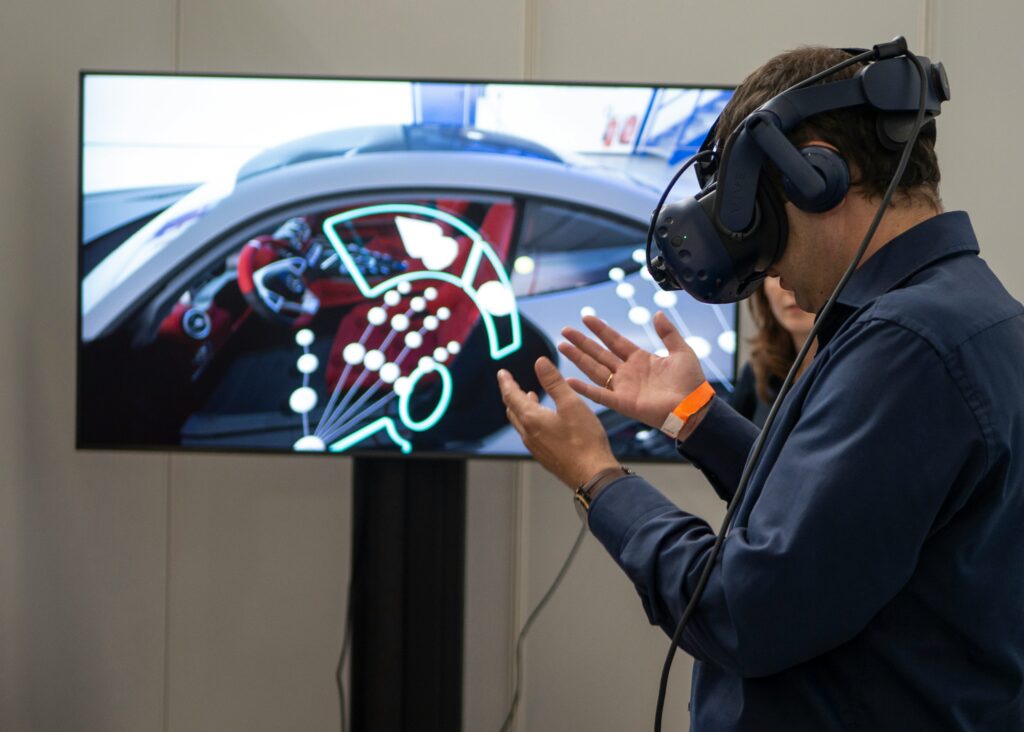
In recent years, Virtual Reality (VR) has evolved from a futuristic concept into a tangible and transformative technology, revolutionizing various aspects of our lives. From gaming and entertainment to education and healthcare, VR is pushing the boundaries of what’s possible, offering immersive experiences that were once the stuff of science fiction. In this blog, we’ll dive into the current state of VR technology, its applications, and what the future holds.
What is Virtual Reality?
Virtual Reality is a technology that creates a simulated environment, allowing users to experience and interact with a three-dimensional world as if they were physically present. This is achieved through VR headsets, which typically include sensors, motion tracking, and high-resolution displays to provide a fully immersive experience. VR can be used in various ways, from gaming and entertainment to professional training and therapy.
The Evolution of VR Technology
1. Early Beginnings:
The roots of VR trace back to the 1960s with pioneering work on early immersive technologies. However, it wasn’t until the 1990s that VR began to gain traction in mainstream consciousness, driven by advancements in computer graphics and motion tracking. The release of VR arcade games and experimental headsets marked the beginning of a new era.
2. The Modern Era:
The 2010s saw significant strides in VR technology, with companies like Oculus (now part of Meta), HTC, and Sony making VR more accessible to consumers. The release of affordable, high-quality VR headsets such as the Oculus Rift and HTC Vive, along with advances in motion tracking and haptic feedback, marked a turning point. VR started to move beyond niche applications, finding its place in gaming, education, and even social interaction.
Applications of VR Technology
1. Gaming and Entertainment:
VR gaming has been one of the most visible and popular applications of VR technology. Games like “Beat Saber” and “Half-Life: Alyx” offer immersive experiences that allow players to step into virtual worlds, interact with their environments, and experience gameplay from a new perspective. VR also extends to other forms of entertainment, including virtual concerts, movies, and interactive storytelling.
2. Education and Training:
VR has the potential to transform education by providing interactive and engaging learning experiences. Medical students, for example, can practice surgeries in a risk-free virtual environment, while history students can explore ancient civilizations as if they were there. VR training simulations are used by various industries, from aviation to military training, to offer realistic, hands-on experiences.
3. Healthcare:
In healthcare, VR is being used for therapy and rehabilitation. Virtual environments can help patients with phobias confront their fears in a controlled setting, assist in pain management, and provide rehabilitation exercises for physical injuries. VR is also being explored for its potential in mental health treatment, offering new ways to address conditions such as PTSD and anxiety.
4. Social Interaction:
Social VR platforms are emerging as a new way for people to connect and interact. Applications like Meta’s Horizon Workrooms and VRChat allow users to meet, collaborate, and socialize in virtual spaces. These platforms offer new opportunities for remote work, virtual events, and community-building, bridging geographical gaps and creating a sense of presence.
Challenges and Future Prospects
While VR technology has made impressive strides, it still faces several challenges. High costs, limited content, and issues with motion sickness are some hurdles that need to be addressed. Additionally, there are concerns about privacy and data security in virtual environments.
Looking ahead, the future of VR holds exciting possibilities. Advancements in hardware, such as lighter and more comfortable headsets, and improved software, including more realistic and interactive experiences, will continue to drive the growth of VR. Integration with other emerging technologies, such as augmented reality (AR) and artificial intelligence (AI), will further expand the potential applications of VR.
Conclusion
Virtual Reality technology is at a thrilling crossroads, with its potential applications growing rapidly and its impact on various industries becoming increasingly evident. As we continue to explore and innovate, VR promises to offer even more immersive, transformative experiences that could change the way we live, work, and play. Whether you’re a gamer, an educator, a healthcare professional, or simply curious about new technologies, VR is a field worth watching as it unfolds its future.
Stay tuned for more updates and insights into the VR world as we continue exploring this fascinating technology!
